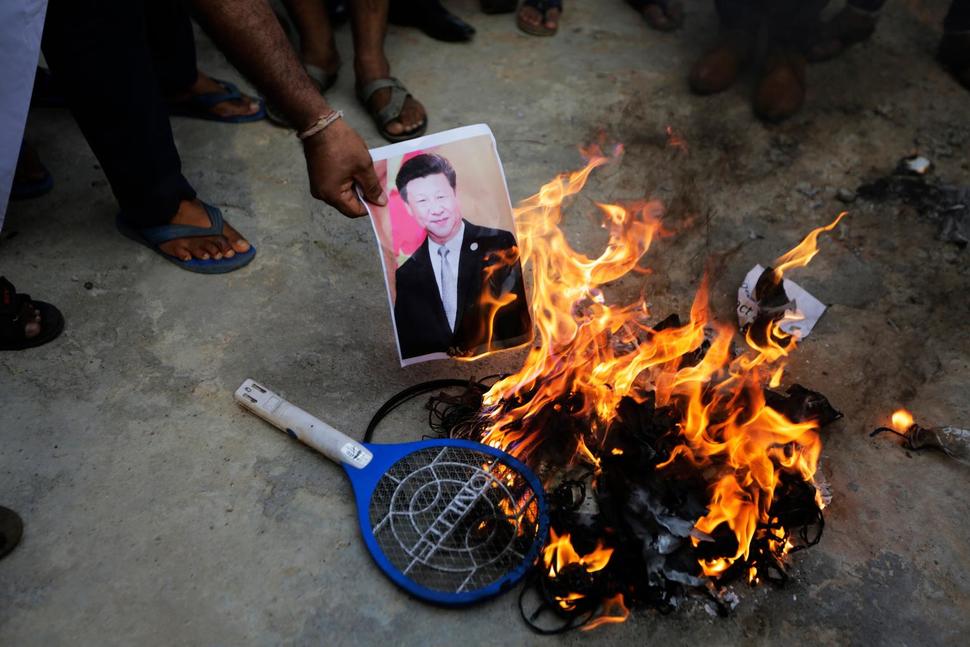
SOURCE: US NEWS
India and China were reportedly killed in a dispute along a contested area of their shared border – the first bloody clash between the two countries in decades and an event with the potential to spark even more violence.
Chinese state media described the incident Monday night in the Galwan River valley where both countries have deployed troops in recent weeks as “the most serious clash between Chinese and Indian soldiers so far,” confirming casualties but offering no further details about them. Indian government sources speaking on the condition of anonymity told The Times of India that 20 Indian army personnel had died in the fighting.
American intelligence believes 35 Chinese troops died, including one senior officer, a source familiar with that assessment tells U.S. News. The incident took place during a meeting in the mountainous region between the two sides – both of which had agreed to disarm – to determine how the two militaries would safely withdraw their presences from the region.
The meeting grew tense and resulted in a physical confrontation between the troops. According to the assessment, all of the casualties were from the use of batons and knives and from falls from the steep topography, the source says.
According to the U.S. assessment, the Chinese government considers the casualties among their troops as a humiliation for its armed forces and has not confirmed the numbers for fear of emboldening other adversaries, the source says.
The sources who spoke with the Times said 43 Chinese troops died in the fighting.
Tensions have mounted in recent weeks around the area spanning in the northern India region of Ladakh and the southwestern Chinese region of Aksai Chin.
The border dispute comes at a time of shifting influence in the region. Beijing has become increasingly bold in its territorial ambitions in recent months, including in the East and South China seas, with U.S. officials saying it has successfully exploited global unrest from the ongoing coronavirus pandemic. At the same time India has enjoyed new and outsized support from the U.S. under the Trump administration, which sees India as a principal battleground for its own economic rivalry with China.
In an editorial in the semi-official Global Times, China said the tensions were caused by “arrogance and recklessness of the Indian side” and that officials there believed “their country’s military is more powerful than China’s.” However the main focus of Beijing’s ire was clear.
“The U.S. has wooed India with its Indo-Pacific Strategy, which adds to the abovementioned misjudgment of some Indian elite,” according to the outlet, which is not a direct mouthpiece of the Chinese Communist Party but is considered aligned with its views. “New Delhi must be clear that the resources that the U.S. would invest in China-India relations are limited. What the U.S. would do is just extend a lever to India, which Washington can exploit to worsen India’s ties with China, and make India dedicate itself to serving Washington’s interests.”
The Times of India documented harsh conditions at the site of the fighting in the mountainous region, including sub-freezing temperatures and high altitudes. The government there has claimed the face-off “was the result of an attempt by the Chinese side to unilaterally change the status quo of the region,” the Times reported. It also cited a statement from a Chinese military spokesperson who reportedly said, “China always owns sovereignty over the Galwan Valley region.”
Troops from the two countries last clashed in 1975, when four Indian soldiers died during an ambush in the Arunachal Pradesh region of northeast India.
The U.S. government had not publicly commented on the skirmish as of Tuesday afternoon.
Trump visited India in February, further strengthening already close ties with Prime Minister Narendra Modi. The Trump administration has dramatically ramped up relations with New Delhi, including growing its trade relations and shifting its military policy. The U.S. in 2018 renamed its combatant command for the area “Indo-Pacific Command” – considered a break from prior administrations attempts to balance relations with India with its regional rivals, including Pakistan.
https://defencenewsofindia.com/american-intelligence-believes-35-chinese-troops-died-us-media/






